Dive Sites
We are privileged to have some of the best diving in Bali around the islands of Nusa Lembongan, Nusa Penida & Nusa Ceningan. The waters around these islands are part of a Marine Protected Area, which has conservation status within Indonesia. There is a great variety of diving to suit all levels, with conditions and topography differing from one site to another. Note conditions are variable around the islands and diving some of the more exposed sites is not always possible.
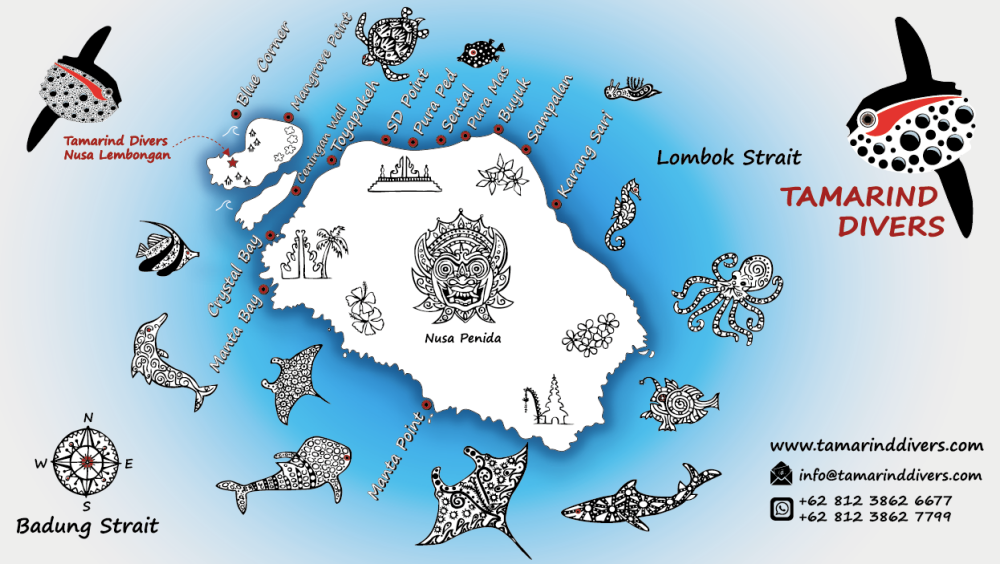
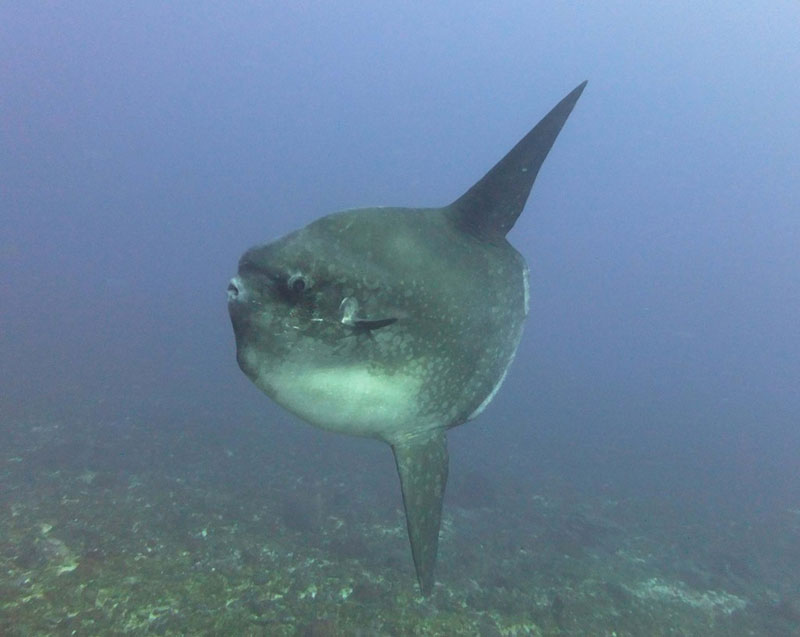
Blue Corner
One of the most famous dive sites in the area, Blue Corner is an exciting, adrenalin-charged dive for experienced divers (+50 dives). Our guides have extensive knowledge of the best conditions to be able to dive safely and we only take 2 guests per guide on this dive. The site consists of a shallow reef, with a series of terraces leading to a drop off wall around the corner itself. Depths here can range from 25 to 50 metres. Currents can be unpredictable and when running, bring in the big pelagics. Reef sharks, eagle rays, barracuda, marbled rays and molas can be see here when the conditions are right.
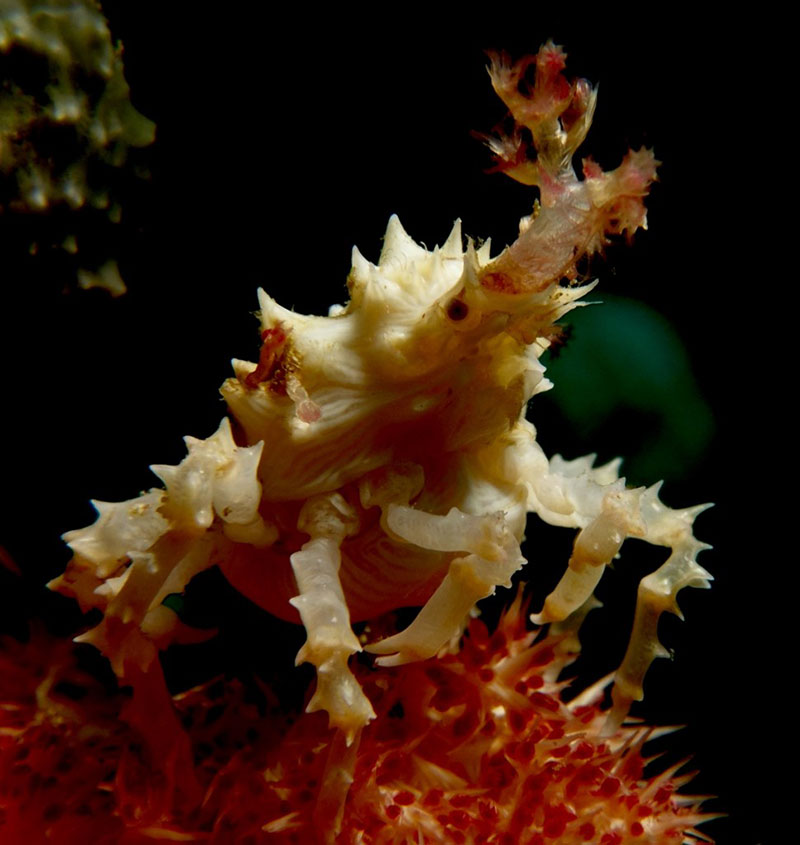
Mangrove Point
The gentle sloping reef adjacent to the mangrove forest on the north shore of Lembongan, contains some of the most beautiful coral in the area. Suitable for all levels, this drift dive hosts abundant fish life, with huge puffers, a variety of triggerfish, moray eels and turtles often sighted. It is also possible to see barracuda, eagle rays and whitetip reef sharks.
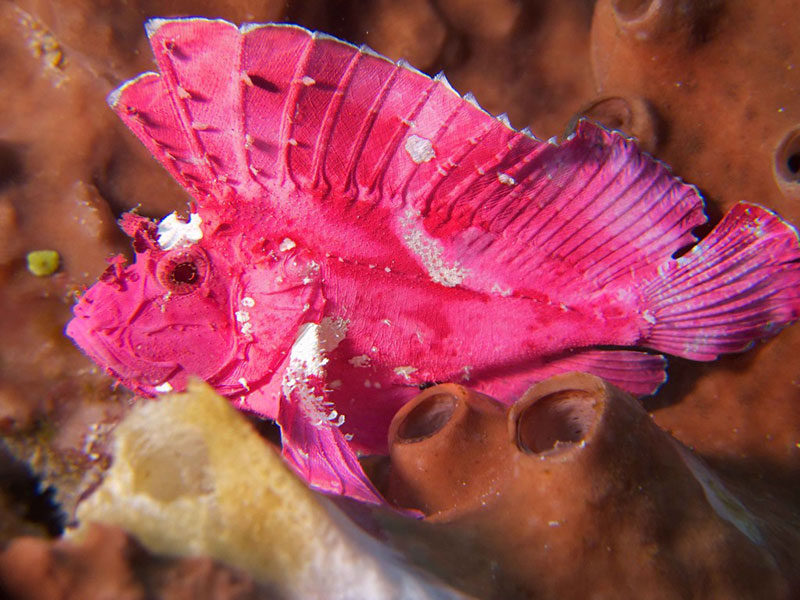
SD Point
SD Point is named after the primary school (Sekolah Desar) on the north-west shore of Nusa Penida. The reefs here are some of the best in the area, with huge coral formations and vast areas of acropora (staghorn) corals, containing rivers of schooling blue damsels. Usually a drift dive from east – west along a sloping reef, the site offers opportunities to see moray eels, scorpionfish, mantis shrimp, turtles and giant trevally. Molas can also be seen here year round.
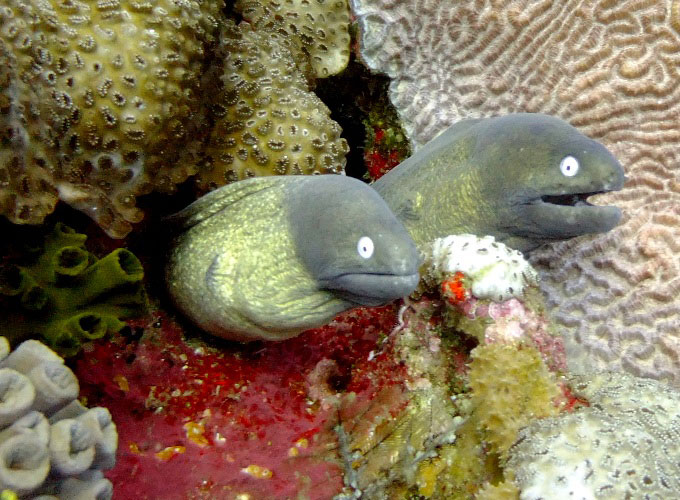
Pura Ped
Head east from SD Point and you’ll find the effervescent reefs of Pura Ped, named after the village containing one of the most important temples in Bali. The sloping reef is a bit steeper here and hosts huge sponges along with the trademark hard and soft coral formations typical with the reefs on the north shore of Penida. Similar marine life to SD Point and the chance to see dogtooth tuna cruising past in the blue. Suitable for all levels of diver, this drift dive rarely disappoints.
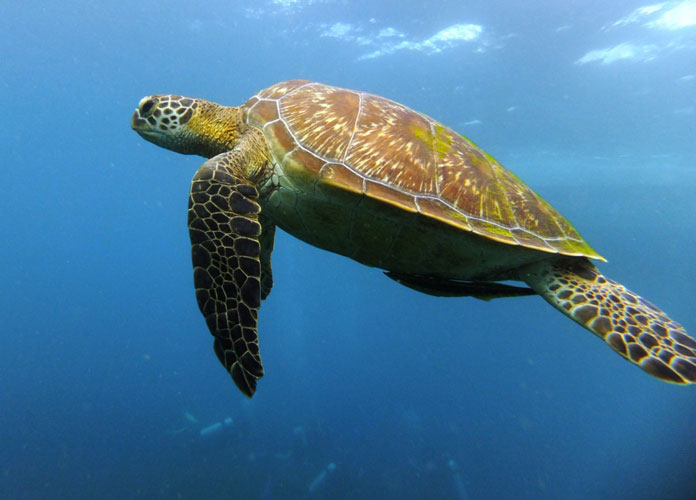
Sental Point
This reef contains one of the most spectacular hard coral bommies in the area, home to a huge shoal of drummer fish. Corals are not as prolific at Sental as sites to the west, but the chances of seeing large pelagics increase, as currents can be strong here. One of the best sites for seeing molas year round and turtles are often spotted, feeding on soft corals.
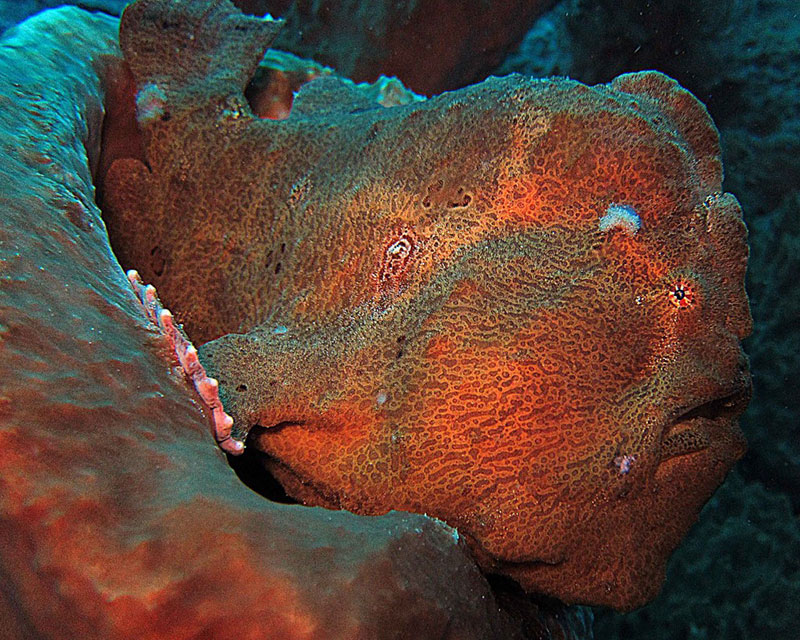
Buyuk Point / Pura Mas
Buyuk is the name of the village to the east of the north shore of Nusa Penida. The reef slopes more steeply as you travel east from Pura Mas and contains lots of gulleys and coral outcrops. Huge barrel sponges can be found here, along with whip corals in deeper water. For the sharp-eyed, frogfish can be seen, camouflaged in the many large sponges on the reef. A great site for spotting the wonderfully named orang utan crab, turtles, whitetip reef sharks and molas.
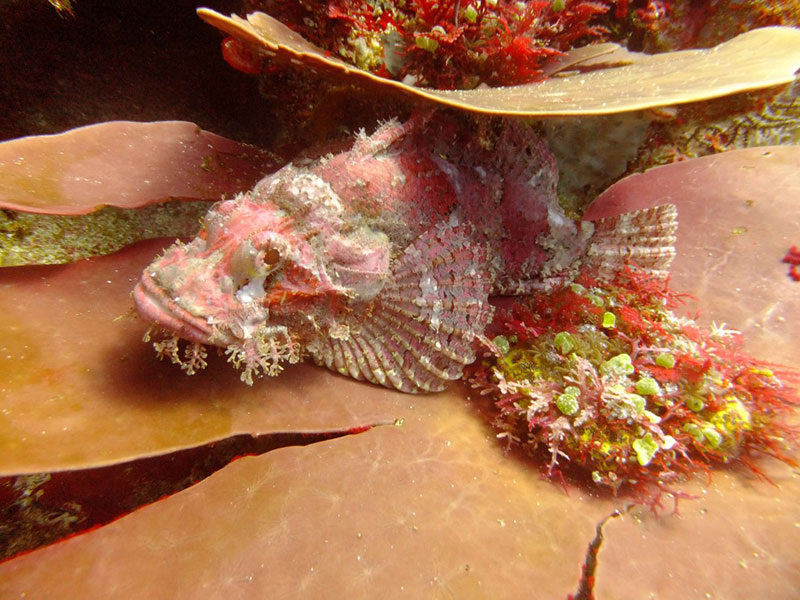
Sampalan
Located on the east of Nusa Penida, Sampalan boasts some of the best table corals to be found anywhere in Indonesia. Normally a drift dive from south-north, the sloping reef offers pristine coral formations with huge barrel sponges. Schooling sweetlips, bannerfish, triggerfish, angelfish and fusiliers make this one of the most colourful dives in the area.
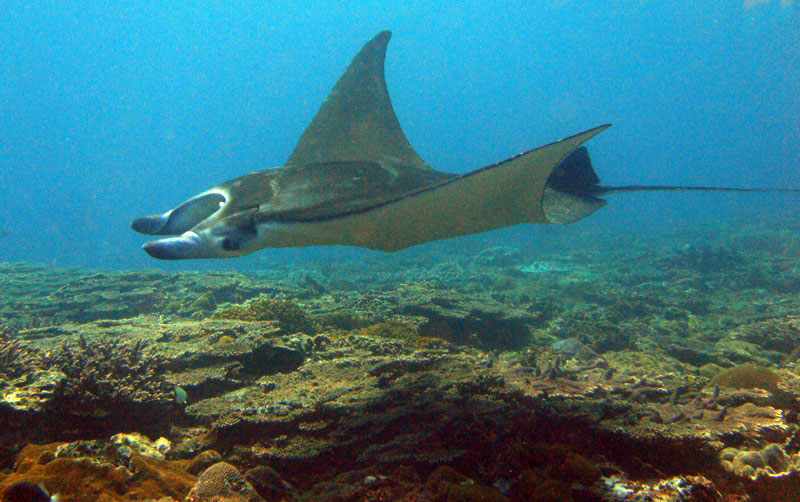
Manta Point
One of the most famous dive sites in the Bali region, this is a manta cleaning station on the southwest coast of Nusa Penida. An exposed site, Manta Point can only be dived when conditions are favourable. Coral growth is not prolific here, with bottom topography consisting of limestone rocks and small, sandy bays. Reef mantas (manta alfredi) seek shelter provided by the bays for cleaning, socialising and also for feeding when plankton aggregations occur. In addition to mantas, blue spotted sting rays, eagle rays, bamboo reef sharks, turtles and molas can be regularly sighted. Suitable for all levels of diver and snorkelling.
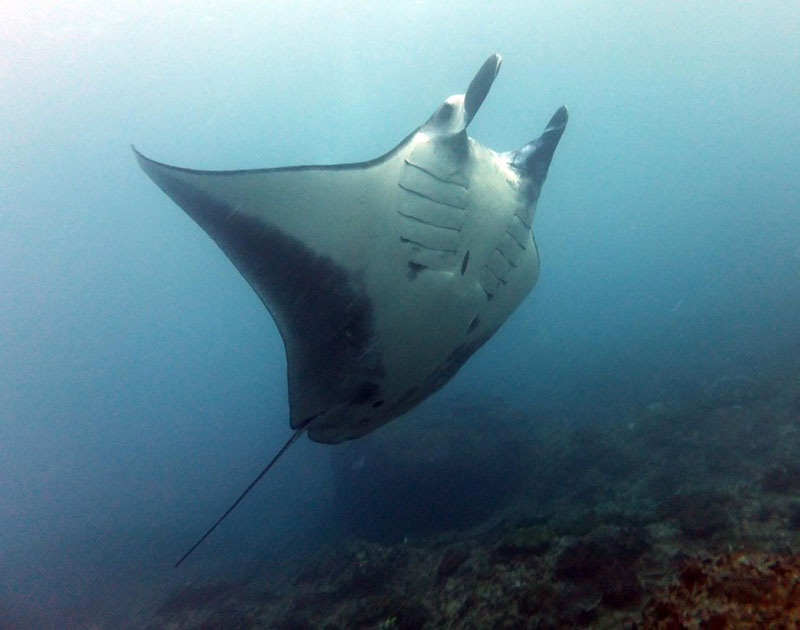
Manta Bay
A series of shallow, sandy bays on the rocky south coast of Nusa Penida, provide mantas with an opportunity to feed when plankton blooms occur. This site is exposed to swell from the Indian Ocean, so can only be dived when conditions allow. Turtles, bamboo sharks, sea snakes and stingrays can be found among the rocky outcrops and bommies within Manta Bay.
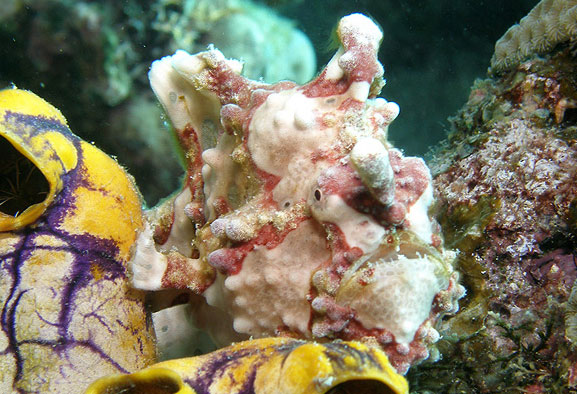
Crystal Bay
A very popular dive site, Crystal Bay is known for its clear waters and often stunning visibility. A small island situated within the bay, hosts a plateau at approx. 10 meters, which drops off to the deeper, nutrient rich waters of the Toyapakeh Straight on the south and west sides. It is around this area where we have the most encounters with our magnificent mola. The north and east sides of the island provide more shelter, with vibrant soft and hard corals found in the shallower waters. Crystal Bay has a reputation as being a challenging dive site, but this largely depends on when and where you dive. Suitable for all levels of diver, as the sandy bay at around 6-8 meters is good for training.
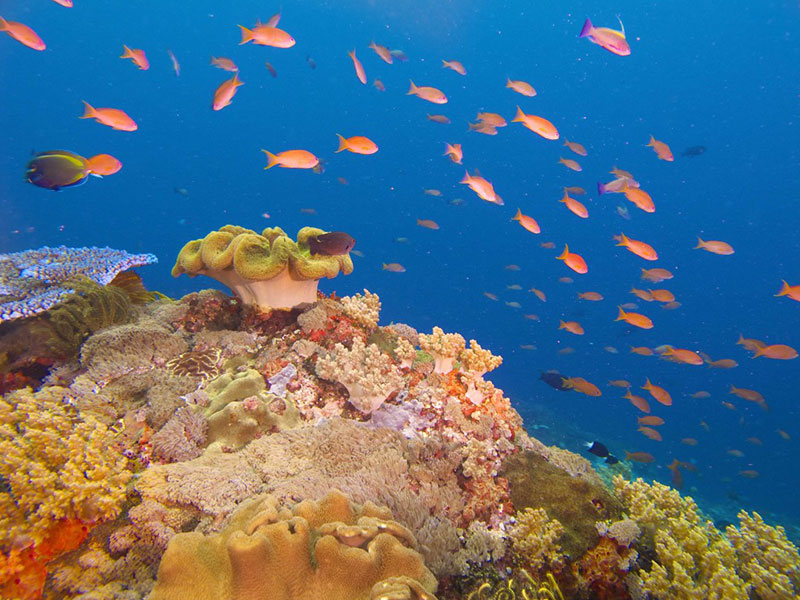
Karang Sari
A sheltered bay, south of Sampalan on the east coast of Nusa Penida. The dive site consists of a shallow plateau to about 10m, which drops off to deeper water along an undulating reef. Lots of gullies and rocky formations make this a great site for exploring. The currents are not usually strong at Karang Sari, so it is a relaxing, chilled dive site. Lots of hard & soft corals, anemones, angelfish, morays and macro life. Keep an eye out into the blue, as large pelagics can be seen swimming by.
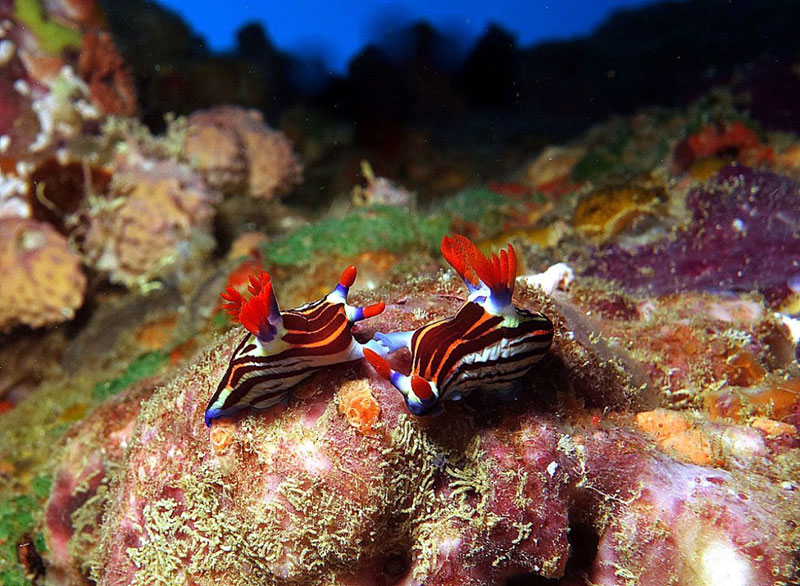
Ceningan Wall
This vibrant wall located on the north east side of Nusa Ceningan, receives nutrient rich waters flowing through the Toyapakeh straight, which is a deep water channel between Ceningan & Penida. The wall is covered in multi-coloured soft corals and is home to nudibranchs, scorpionfish, lionfish, sea snakes, schooling bannerfish and red-toothed triggerfish. Always keep an eye out into the blue, as large pelagics can be seen cruising past, including molas. Currents can be tricky here, so it can only be dived when the conditions are suitable and even then, it is a site for experienced divers.
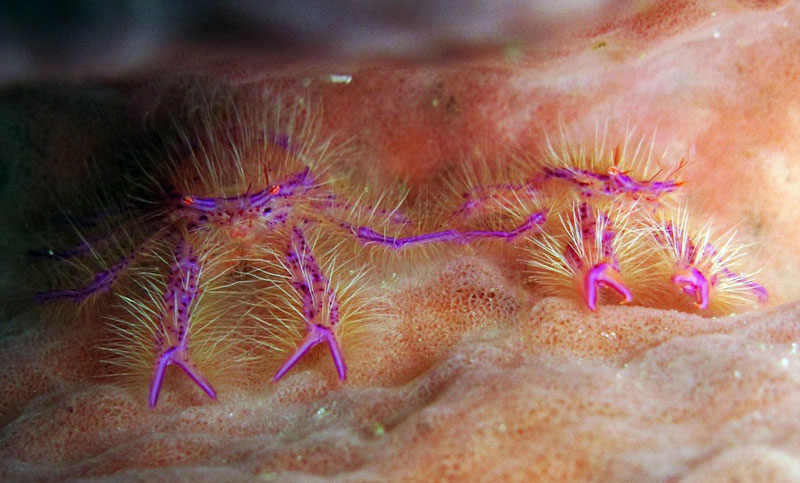
Toyapakeh
One of our favourite dive sites, Toyapakeh means ‘salty water’ in Balinese. It’s location in the muslim village of the same name, on the north west coast of Nusa Penida, offers unique topography within the area. The dive site consists of a vibrant wall to the south and a gently sloping reef, with numerous coral bommies, to the north. Indeed one divebook compares the underwater formations found here, to the Manhattan skyline!
These excellent reefs host a huge variety of marine life, from critters to the BIG stuff! Everything from tiny hairy squat lobsters to molas & whalesharks have been spotted at Toyapakeh.
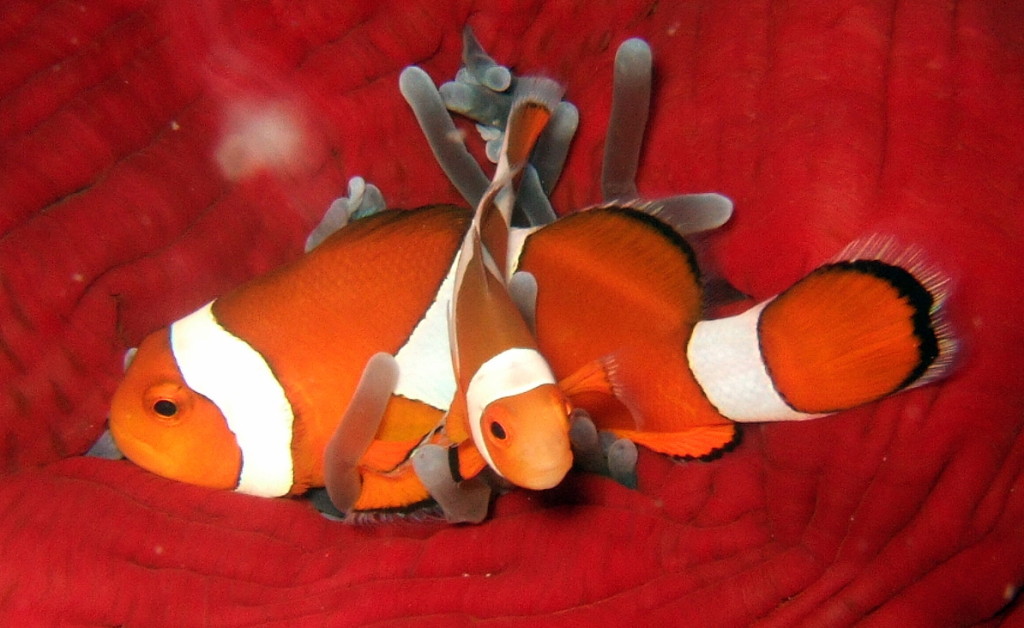
Tamarind Bay
The beautiful shallow house reef in front of our dive site is easily reached by shore, or a short boat ride. Coral regeneration has taken place over the last few years due to efforts by local people, with abundant reef fish occupying the coral bommies and outcrops. An ideal site for skin diving and snorkelling when conditions allow.
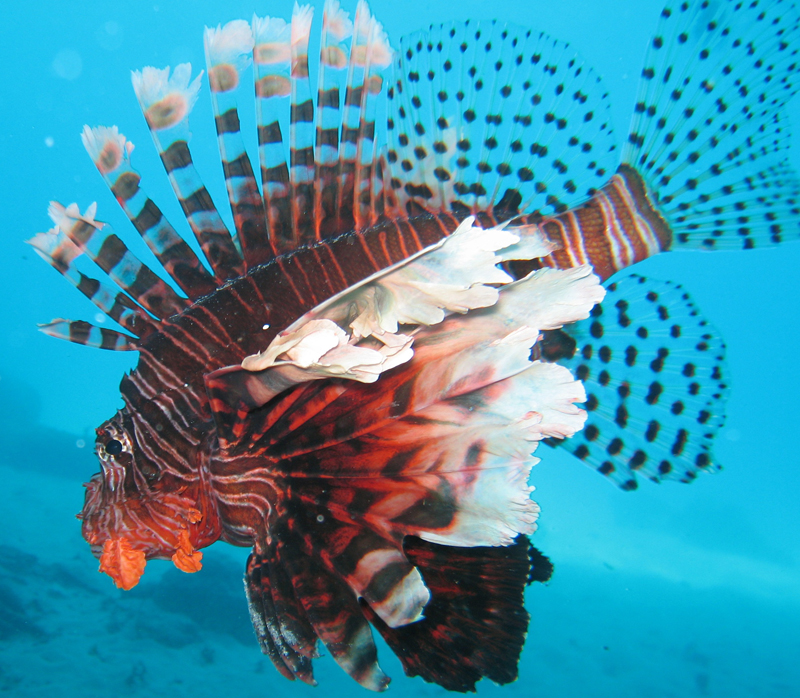
Lembongan Bay
A couple of hundred meters from our dive center, this is a good site for snorkelling, beginner divers and training when conditions allow, due to the sheltered waters within the bay. Often referred to as ‘The Pontoon’ this site comprises of a sandy bottom, with lots of coral bommies and rocky outcrops, providing home to reef fish, lionfish, nudibranch, squid and a variety of crustaceans.
Diver Code of Conduct for Oceanic Sunfish (mola) and Manta Ray encounters
To ensure divers visiting the Nusa Penida Marine Protected Area have limited impacts on both molas and manta rays, a code of conduct has been developed and adopted by the Coral Triangle Center, the Klungkung District Government and the Lembongan Marine Association.
Tamarind Divers fully supports the following guidelines and we make sure all our divers are briefed before dives in order to observe these magnificent creatures, without disturbing their natural behaviour :-
- Never touch a mola, manta ray or any other fish when diving. If a mola or manta approaches you, remain still, but DO NOT touch it!
- Always approach manta rays and molas very slowly within their field of view
- Stay close to the reef and never surround the manta ray or mola
- Never enter the cleaning station. If the cleaning fish are disturbed, or the coral on or near the cleaning station is damaged, the cleaning station can be compromised and the manta rays and molas may not come back
- Always maintain a minimum distance of 3m (or 2 body lengths) from the closest manta ray or mola
- Maintain a minimum distance of 10m (or 5-6 body lengths) when they are unsettled (not cleaning) and approaching the reef
- Never be closer to the manta ray or mola than your guide
- Do not swim closely behind the manta ray or mola; this is how predators usually attack and your close proximity may startle them
- Do not swim directly above or below the manta ray or mola as this may disturb cleaning and feeding behavior. However, if the manta ray or mola decides to swim above you remain still and blow as few bubbles as possible
- Never block the escape route off the reef, out of a feeding area, or the pathway onto a cleaning station
- Do not use flash photography as this can disturb the mola
- Follow the directions of your dive guide at all times
Want to know more about the mysterious mola? Check out the PADI Mola Mola Awareness Specialty, available exclusively with Tamarind Divers.